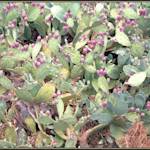Parks And Reserves, Kruger National Park
2002 • South Africa
It is one of the world's largest wildlife sanctuaries with almost every species of game found in Southern Africa. It became a national park in 1926, and in 2002 it became part of the Great Limpopo Transfrontier Park, which encompasses parklands in South Africa, Mozambique, and Zimbabwe. “The park is considered to be of continental importance for black rhino conservation, because it is one of a few reserves which is large enough to accommodate a genetically and demographically viable population of black rhinos. The Kruger National Park also houses a fast growing population of about 3,000 white rhinos. This large white rhino population acts as an effective buffer against black rhino poaching as poachers are more likely to encounter the more numerous white rhinos than black rhinos. In the past 10 years only one black rhino has been lost through poaching. “
“Black rhino conservation in South Africa's Kruger National Park, WWF <http://wwf.panda.org/?uProjectID=ZA0030
Image: freestock.ca


Learn about Maya Lin’s fifth and final memorial: a multi-platform science based artwork that presents an ecological history of our world - past, present, and future.

Discover ecological histories and stories of former abundance, loss, and recovery on the map of memory.

Learn how we can reduce our emissions and protect and restore species and habitats – around the world.

See how art can help us rethink the problems we face, and give us hope that each one of us can make a difference.

Help make a global memorial something personal and close to home. Share your stories of the natural world.


